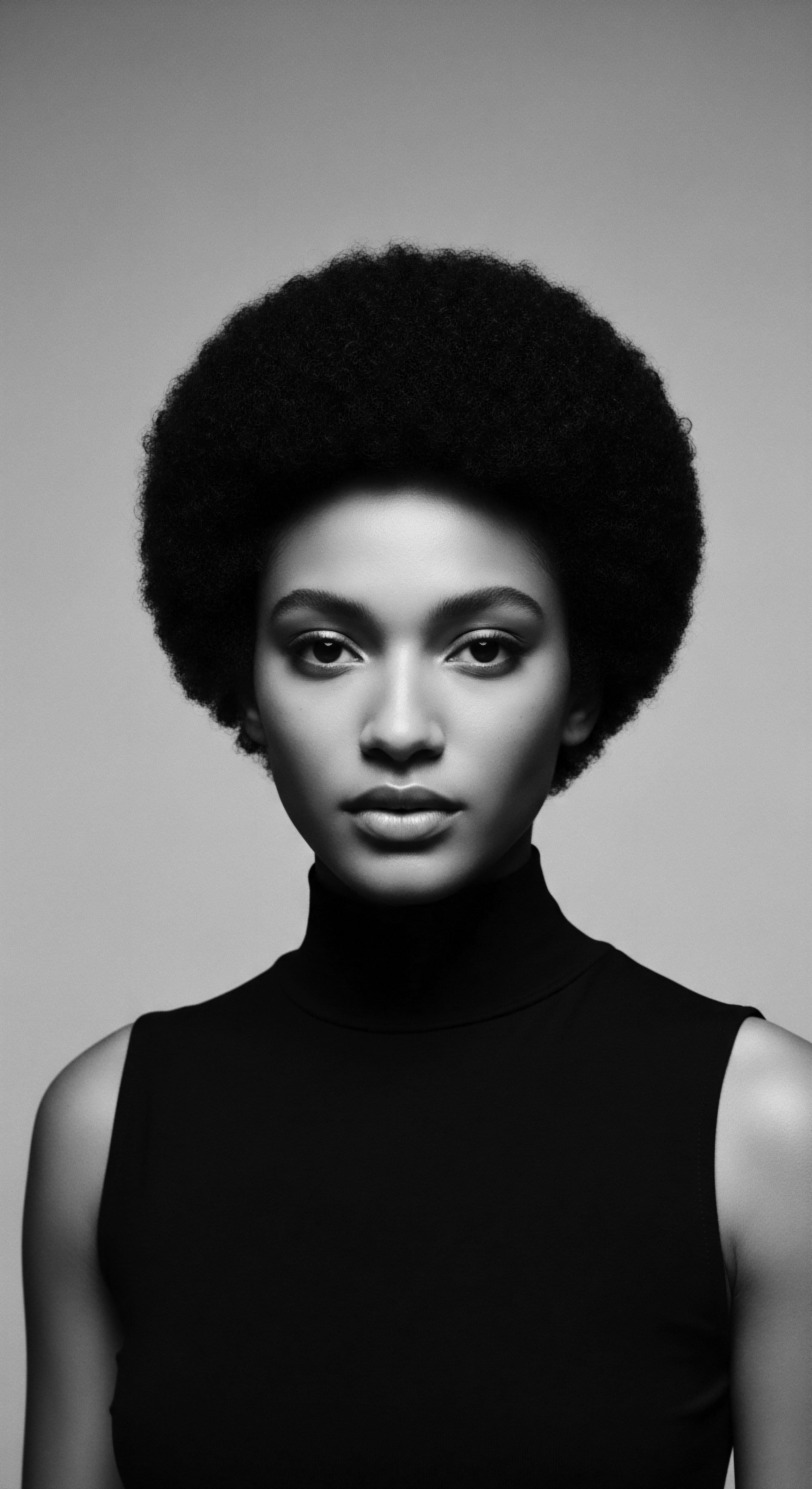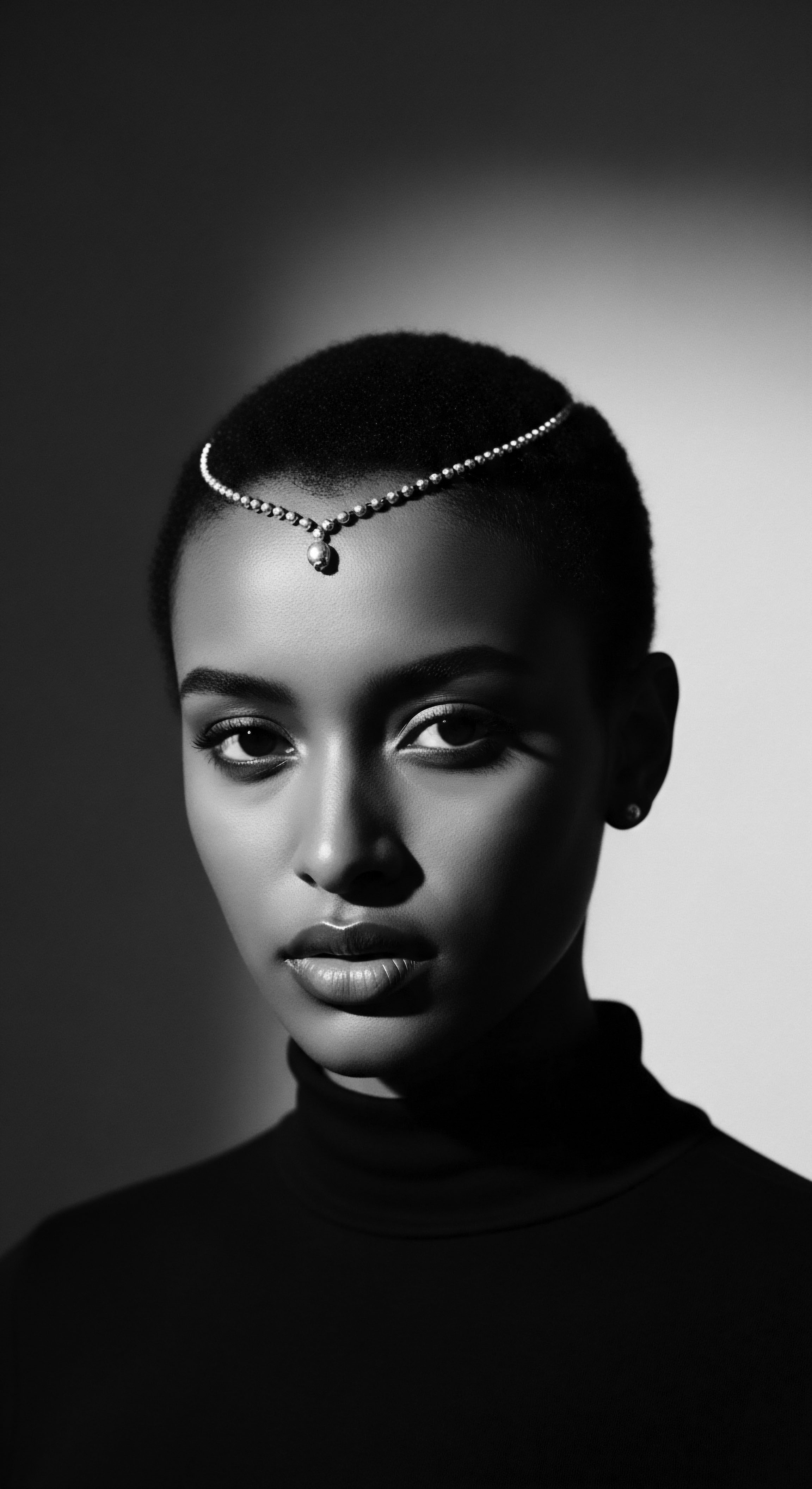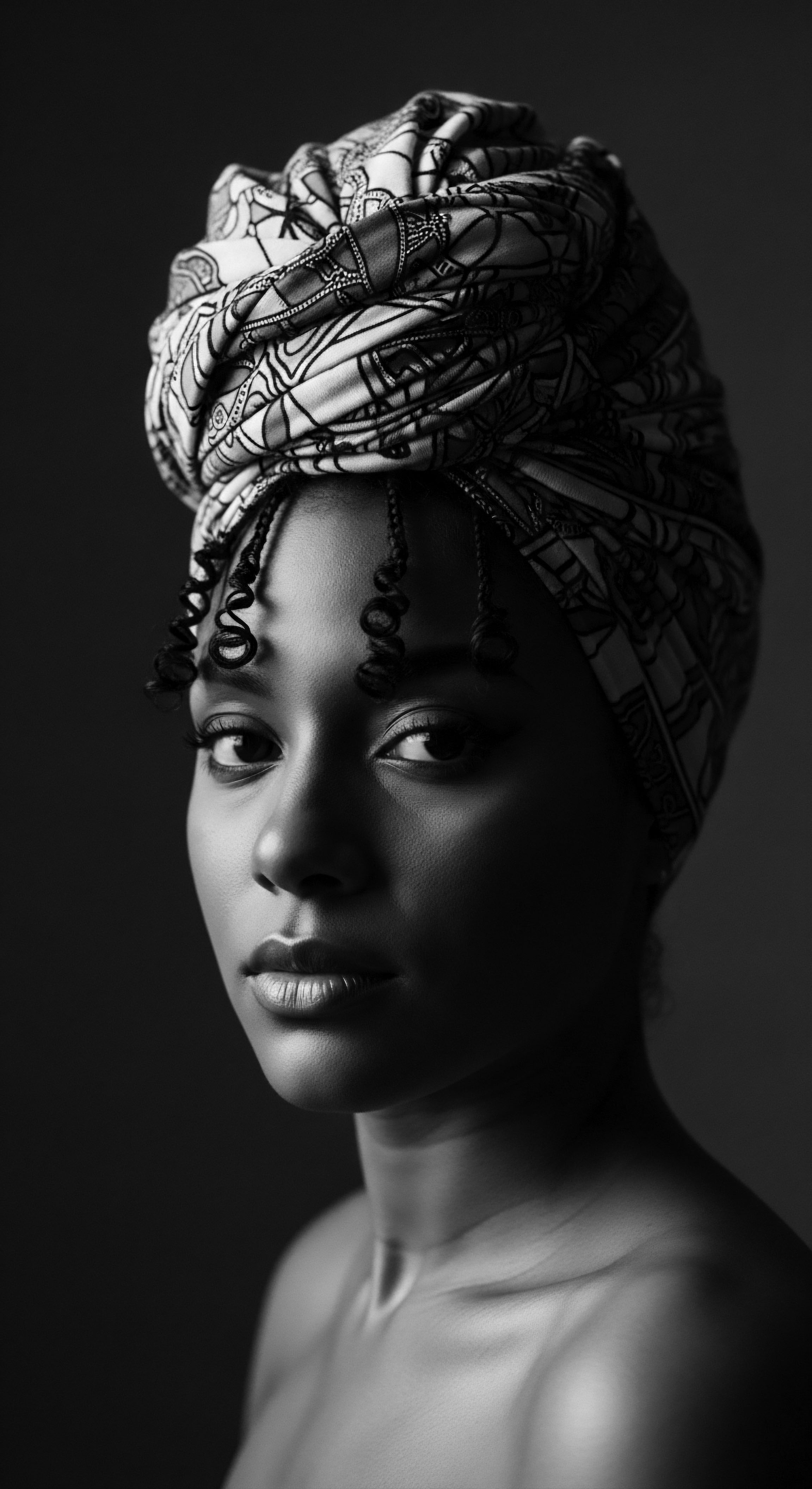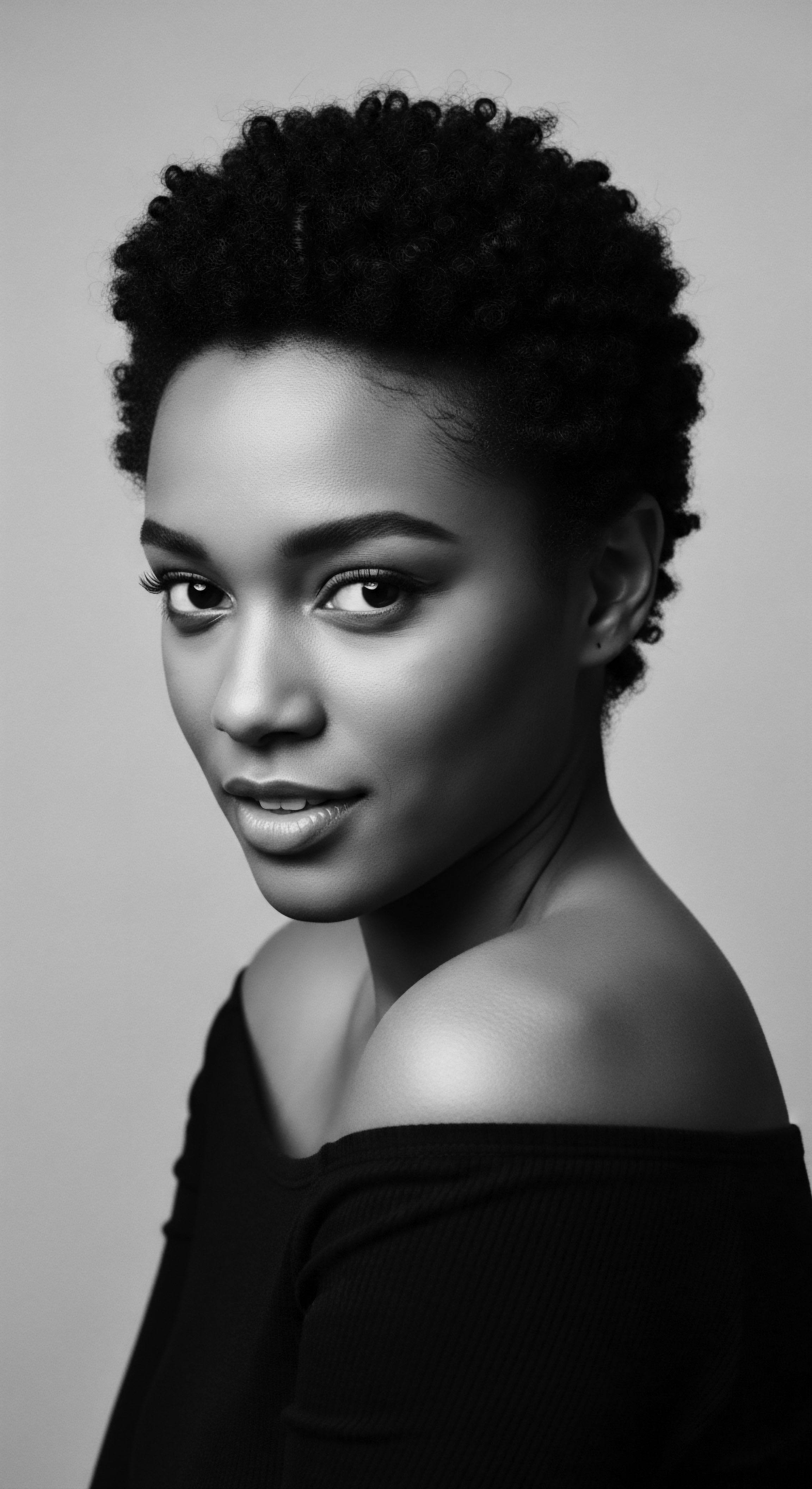
Fundamentals
The concept of Igbo Beauty Rituals, at its very genesis, connects directly to the ancient understanding of the self as an extension of the cosmos, where outward presentation holds deep, reciprocal ties to inner equilibrium and communal standing. For the Igbo people, a vibrant ethnic group primarily dwelling in southeastern Nigeria, beauty is not a superficial veneer; it is a living expression of heritage, social meaning, and spiritual connection. These rituals involve a holistic approach to adornment and care, particularly for textured hair, Black hair, and mixed-race hair, seeing hair not merely as biological growth but as a profound repository of personal and collective identity.
From pre-colonial times, the deliberate shaping and embellishing of hair served as a visual language, capable of communicating an individual’s age, marital status, social class, occupation, and even mood to their community. This communicative aspect is central to comprehending the foundational essence of Igbo beauty traditions.
The biological structure of textured hair itself plays a crucial role in the development and persistence of these traditions. Afro-textured hair, characterized by its tightly coiled strands and often elliptical cross-section, possesses unique qualities that informed traditional care methods. Its high curvature, for instance, leads to a greater propensity for tangling and dryness compared to straighter hair types. This inherent biological reality meant that protective styling, consistent moisture, and gentle handling were not merely aesthetic choices but practical necessities for maintaining hair health in the ancestral climate.
Thus, the rituals were born from an intimate, observed understanding of the hair’s elemental needs, giving rise to practices that preserved its strength and vitality while celebrating its unique form. The very acts of combing, coiling, and braiding became mindful engagements with the self, a silent conversation between the individual and their intrinsic hair identity.
Igbo beauty rituals fundamentally interpret outward presentation, especially hair, as a symbolic language reflecting a person’s heritage, social position, and spiritual ties.

The Hair as a Living Chronicle
Across generations, Igbo society revered hair as a literal crowning symbol of glory and femininity for women, expecting meticulous attention to its care. This deep symbolism positioned hair as a dynamic chronicle of life, where each style could convey a chapter of a person’s existence. A young, unmarried woman might wear a specific style to signify her youthfulness and eligibility, while a married woman’s coiffure could indicate her marital standing or motherhood. Times of mourning, such as widowhood, often involved significant changes, like shaving the head, a stark visual representation of grief and altered status within the community.
The methods and materials employed in these early beauty practices were intimately connected to the natural world. Indigenous plants, clays, and oils were harvested and processed to cleanse, condition, and adorn. These natural elements were not randomly chosen; their properties, often discovered through centuries of observation and communal knowledge, supported the well-being of hair and scalp.
For instance, palm oil and various plant-based pastes were used for both nourishment and styling, underscoring a sustainable, earth-centered approach to beauty. This ancestral wisdom, gleaned from direct interaction with the environment, shaped the earliest iterations of what we now identify as Igbo Beauty Rituals, establishing a foundation of deep reverence for natural resources and their inherent power.
- Isi Owu ❉ This traditional threading practice involves wrapping sections of hair with black thread, a style historically common among young unmarried girls to signify youth. It also serves as a protective method, aiding hair retention.
- Ojiugo ❉ Intricate patterns formed with cornrows, a style traced back millennia in West Africa, representing royalty and artistry.
- Ngala Hairstyle ❉ Known for symbolizing pride and elegance, often involving elaborate braiding and adornments.

Intermediate
Moving beyond the elemental foundations, the Igbo Beauty Rituals manifest as a tender thread of living traditions, meticulously passed down through familial and communal lines. These practices extend beyond mere personal grooming; they are collective acts, social opportunities, and intergenerational classrooms where wisdom, stories, and cultural values are woven into every strand. Hairdressing sessions were, and in many communities continue to be, spaces for bonding, for oral histories to be shared, and for spiritual insights to be exchanged, reinforcing communal ties and preserving cultural memory.
The care of textured hair, particularly Black and mixed-race hair, within Igbo traditions holds profound practical and symbolic weight. The very structure of Afro-textured hair, with its unique coil pattern and elliptical cross-section, requires specific attention to maintain moisture and prevent breakage. Traditional Igbo methods, therefore, prioritized moisture retention and protective styling long before scientific understanding caught up.
Natural oils, such as those derived from palm, and various plant-based pastes were employed not only for styling but also for their nourishing properties, offering a shield against the elements and supporting hair resilience. These preparations were applied with careful touch, reflecting a deep respect for the hair’s inherent qualities.
Hair care in Igbo traditions serves as a communal ritual, strengthening social bonds through shared acts of grooming and the transmission of ancestral wisdom.

The Legacy of Adornment and Communication
Hair in Igbo society acts as a potent medium for non-verbal communication, its styles and adornments conveying complex social messages. The choice of a particular coiffure could signal a woman’s marital status, age group, or even her role in a ritual or ceremony. For example, during significant rites of passage, specific styles were worn to mark the transformation of individuals within the community.
An elaborate hairstyle, possibly adorned with cowries, beads, or threads, could communicate wealth, status, or an upcoming event. This intricate system of visual codes transformed the act of hairstyling into a dynamic form of cultural dialogue.
Consider the historical practice of Uli body and hair adornment, a vivid example of how beauty rituals served as sophisticated cultural markers. Uli is an ancient art form among the Igbo, predominantly practiced by women, involving the application of plant-based pigments to the skin and, in some instances, the scalp and hair, creating intricate patterns and motifs. These temporary designs, often lasting a few days, were more than decorative; they were expressions of identity, beauty standards, spirituality, and cultural heritage. Women who created Uli designs were revered for their artistic skill and often their connection to the spiritual realm.
A specific instance of Uli’s connection to hair and heritage is seen in its use during the pre-colonial “fattening room” practice. Young women, secluded in preparation for marriage, were fed rich foods and instructed on domestic, sexual, and religious matters. Upon their emergence, presented to the community at the height of their beauty, their bodies, and sometimes their hair, would be painted with Uli designs. These designs emphasized the girl’s physical strength and beauty, drawing attention to features such as a long neck or even pubic hair, which symbolized strength and fertility.
(Thomas, 1913). This ritualized adornment, as documented by early anthropologists like N. W. Thomas, highlights how Uli on the body and hair underscored significant life transitions, making the individual’s body a canvas for communal values and aspirations. The temporary nature of Uli designs meant their application was a recurring ritual, continually reaffirming status and beauty through a shared, visually rich cultural expression.

Communal Care and Cultural Transmission
The communal act of hair care was a cornerstone of Igbo society. Grandmothers, mothers, aunts, and sisters would gather, often under the shade of a tree or during evening moonlight talks, to engage in the time-consuming process of washing, oiling, detangling, and styling hair. These gatherings fostered deep bonds, transmitting traditional hair care knowledge, folklore, and moral lessons from elder generations to younger ones.
The physical touch involved in styling someone’s hair was an act of profound intimacy and care, linking individuals through a shared heritage of self-adornment. The preservation of specific techniques, like the methods for creating Isi Owu or Ojongo styles, became a living library of cultural memory.
This collective approach extended to the selection and preparation of natural ingredients. Communities would know where to find specific plants, how to process their extracts, and the particular benefits they offered for hair health. The knowledge of which herbs could soothe an irritated scalp, which oils could seal moisture, or which clays could clarify the strands was communal property, passed down through observation and direct instruction. This collective custodianship ensured the continuity and vitality of these beauty rituals, safeguarding ancestral practices against the passage of time.
- Palm Oil ❉ Frequently used for its moisturizing properties, providing sheen and aiding in the conditioning of hair, essential for managing textured hair dryness.
- Camwood Powder ❉ Mixed into a paste, it contributed to both styling and skin adornment, often providing a reddish tint or serving as a base for other applications.
- Traditional Hair Combs ❉ Often crafted from wood or bone, these tools were designed with wide teeth to gently detangle and manage coiled hair textures, preventing damage during grooming.

Academic
The academic elucidation of Igbo Beauty Rituals transcends simple description, positioning them as a complex system of cultural practices that articulate a society’s cosmology, its responses to environmental and social pressures, and its enduring cultural memory. These rituals, particularly those centered on textured hair, serve as a significant medium for understanding the intricate interplay between biological imperatives, aesthetic preferences, and sociopolitical realities within the Igbo experience, both historically and in the contemporary moment. The meaning of “Igbo Beauty Rituals” thus signifies a profound cultural institution, a framework through which identity is constructed, affirmed, and continually reinterpreted. This framework allows for a deep, sustained inquiry into the specific long-term consequences and societal impacts of these practices.
Hair, in Igbo cosmology, is often regarded as the most elevated part of the body, a direct conduit to the spiritual realm and ancestral wisdom. This perception imbues hair care with spiritual significance, transforming daily routines into sacred acts that honor lineage and connect the individual to a broader, unseen world. The decision to cut hair, or to style it in a particular manner, could therefore carry spiritual implications, sometimes requiring ritual consultation or ceremony. For instance, children born with natural dreadlocks, known as ‘dada,’ were historically regarded with special reverence, believed to possess powerful spiritual gifts.
Their hair was often left uncut for years, with any eventual cutting requiring specific ceremonies and the child’s consent, underscoring the deep spiritual attachment associated with their locks. The disregard for such practices, as some anecdotal accounts suggest, could lead to spiritual imbalance or negative outcomes for the child, demonstrating the profound belief in the hair’s role as a spiritual anchor.
Igbo hair rituals represent a living archive of community memory, resilience, and identity, providing a pathway to understanding African cultural continuity.

The Sociopolitical Dimensions of Coiffure
Beyond aesthetic and spiritual dimensions, Igbo hair rituals historically functioned as sophisticated markers within a complex social hierarchy. A woman’s hairstyle could instantly communicate her age, marital standing, the village she hailed from, or even her family’s wealth. This societal communication system extended to political alliances and expressions of status.
The intricate, time-intensive nature of many traditional styles meant that only those with leisure, or the means to pay skilled artisans, could afford them, thereby acting as a visual testament to social standing. As Oladumiye, Adiji, and Olabiyi (2013) assert, Igbo hairstyles embodied principles of art and design, with curves, zigzags, and straight lines conveying messages and elevating the hair to a work of art.
The introduction of colonial influences brought significant challenges to the continuity of these practices. European beauty standards, often associating Afro-textured hair with terms like “nappy” or “wooly,” contributed to a devaluation of traditional styles, leading some to adopt straightening methods. This period marked a struggle for self-perception, where conformity to imposed ideals sometimes eclipsed ancestral practices.
Despite these pressures, many communities maintained their traditional styles as acts of quiet resistance and cultural preservation, reflecting a deep-seated commitment to their heritage. This resilience speaks to the profound embeddedness of hair practices within the Igbo identity.
| Aspect Purpose |
| Traditional Igbo Approach (Pre-Colonial) Communication of social status, age, marital state, spiritual connection. |
| Contemporary Adaptations (Post-Colonial) Expression of cultural pride, identity, personal style; protective styling for hair health. |
| Aspect Ingredients |
| Traditional Igbo Approach (Pre-Colonial) Primarily locally sourced plant oils (e.g. palm oil), clays, herbs, natural pigments. |
| Contemporary Adaptations (Post-Colonial) Blends of traditional and modern cosmetic products, often emphasizing natural ingredients. |
| Aspect Styling Techniques |
| Traditional Igbo Approach (Pre-Colonial) Intricate braiding (Isi Aka/cornrows), threading (Isi Owu), coiling, specific adornments (cowries, beads, shells). |
| Contemporary Adaptations (Post-Colonial) Continued use of braids, twists, Bantu knots, threading, often with extensions or modern tools. |
| Aspect Communal Aspect |
| Traditional Igbo Approach (Pre-Colonial) Highly communal, often multi-hour sessions fostering social bonding and knowledge transfer. |
| Contemporary Adaptations (Post-Colonial) May be communal within families, but often professionalized in salons, with digital communities also playing a role. |
| Aspect The enduring spirit of Igbo beauty rituals highlights an unbroken cultural lineage, demonstrating adaptability in the face of historical shifts while retaining its core value. |

The Unbound Helix ❉ Identity, Resilience, and Future Expressions
The concept of the “Unbound Helix” offers a powerful metaphor for understanding the enduring impact and future trajectory of Igbo Beauty Rituals, particularly for textured hair. This metaphor speaks to the inherent structure of coiled hair, which, despite its apparent fragility due to its helical nature and points of weakness, possesses an unparalleled capacity for resilience and self-expression. Just as the DNA helix holds the genetic code, so too does textured hair carry the cultural code of African heritage, resisting attempts at erasure and continually asserting its distinct identity.
The contemporary resurgence of interest in traditional African hairstyles and natural hair care, especially within the Black and mixed-race diaspora, directly reflects the long-term consequences of colonial impositions and a conscious decision to reclaim ancestral wisdom. Modern stylists and individuals increasingly look to traditional practices, such as African threading (Ishi Owu) or Bantu knots (Isi Ntukwu), not just for their aesthetic appeal but for their protective qualities and connection to cultural roots. This movement signals a deeper psychological and cultural shift, where embracing natural hair becomes an act of self-acceptance and a powerful statement of heritage, challenging Eurocentric beauty standards that historically marginalized Black hair.
(Ogiri, 2013, p. 34-36)
The impact of Igbo beauty rituals on shaping individual and collective futures manifests in several ways. For one, the continued practice of these rituals, even in modernized forms, reinforces a sense of communal belonging and intergenerational continuity. It provides a tangible link to the past, allowing individuals to experience a physical connection to their ancestors and shared cultural history.
This historical awareness fosters a stronger sense of identity and pride, countering historical narratives of hair-related shame or inferiority. The communal gatherings for hair care, even if less frequent in urban settings, still exist and serve as vital conduits for transmitting cultural values and affirming collective identity.
- Spiritual Connotation ❉ Hair is seen as a connection point to ancestors and the divine, acting as a spiritual antenna.
- Social Signifier ❉ Hairstyles communicate messages regarding age, marital status, social class, and occupation.
- Artistic Expression ❉ The intricate patterns and adornments transform hair into a canvas for creative artistry and cultural narrative.
- Resistance and Reclamation ❉ Maintaining traditional hair practices serves as an assertion of identity against colonial erasure and a celebration of African heritage.

Holistic Well-Being and Cultural Preservation
The emphasis on natural ingredients and gentle care methods within Igbo beauty traditions offers insights for contemporary holistic hair wellness. Understanding the unique biomechanical characteristics of Afro-textured hair – its tight coils, elliptical shape, and propensity for dryness – allows for the development of care routines that genuinely support its health rather than working against its natural structure. The ancestral wisdom embedded in Igbo rituals provides a historical blueprint for protective styling and moisture retention, practices that are gaining renewed scientific validation. This ancient knowledge, when married with modern understanding, presents a path for textured hair care that is both efficacious and deeply respectful of its heritage.
The future of Igbo Beauty Rituals lies in their capacity for adaptability and their ongoing role in fostering pride in Black and mixed-race hair experiences. As global dialogues around cultural appropriation and the politics of hair continue, these rituals provide a foundational reference point for authentic, heritage-informed beauty practices. The ongoing interest in traditional styles like Isi Owu, Bantu knots, and various forms of braiding demonstrates a collective will to keep these traditions alive, ensuring that the legacy of Igbo hair care continues to inspire and sustain future generations, affirming the inherent beauty and strength of textured hair in all its historical and evolving manifestations.

Reflection on the Heritage of Igbo Beauty Rituals
As we contemplate the rich lineage of Igbo Beauty Rituals, a profound understanding emerges ❉ these practices are far more than mere embellishments of the physical form. They represent a living testament to the resilience of cultural memory, a vibrant dialogue between ancestral wisdom and contemporary self-expression. Each careful manipulation of a strand, each adornment placed, echoes the whispers of foremothers who understood that true beauty originates from a place of holistic well-being, deeply rooted in communal values and an intrinsic connection to the spiritual realm.
The path of textured hair, particularly for Black and mixed-race individuals, has often been fraught with external pressures and historical erasures. Yet, in the enduring legacy of Igbo hair traditions, we discover a wellspring of affirmation, a powerful reminder that our hair is a sacred crown, inherently beautiful in its natural expression.
The “Soul of a Strand” ethos resonates deeply here, for within the intricate coils of textured hair lies a universe of stories—stories of migration, resistance, survival, and boundless creativity. Igbo Beauty Rituals, with their emphasis on natural elements, communal care, and symbolic communication, beckon us to reconsider our relationship with our own hair. They invite us to view our strands not as objects to be conformed, but as living extensions of our heritage, deserving of gentle attention and profound reverence. This ancestral wisdom offers a guiding light, encouraging a journey of discovery that celebrates the unique contours and incredible resilience of textured hair, ensuring its legacy continues to flourish for countless generations to come.

References
- Oladumiye, E.B. Adiji, V.B. & Olabiyi, O.S. (2013). The Evolution of Traditional Igbo Hairstyles Across the Eras. SCOREline, 96-98.
- Thomas, N. W. (1913). Anthropological Report on the Igbo-speaking People’s of Nigeria. London ❉ Harrison and Sons.
- Ottenberg, S. (2006). Igbo ❉ Art and Culture. New York ❉ Prestel Publishing.
- Ugwu, A. (2009). Igbo History and Culture. Onitsha ❉ Africana Publishers.
- Utoh-Ezeajugh, T. C. Ebekue, E. & Emeka-Nwobia, N. U. (2021). Speaking Bodies ❉ Documenting Uli Body Designs of the Igbo of Nigeria. In Studies on the Art and Culture of the Igbo .
- Ogiri, E. A. (2013). The Traditional African Hairstyles ❉ A Dying Culture. Journal of Culture and Society, 34-36.
- Nwamara, M. O. (2021). Dada-Hair Style The Engine Power House For Mami Water Spirituality And Spirit Possession In Traditional Igbe Cult Religion Of T. Journal of African Studies and Sustainable Development, 7(3), 1434-1447.
- Byrd, A. D. & Tharps, L. D. (2001). Hair Story ❉ Untangling the Roots of Black Hair in America. St. Martin’s Press.
- Gomez, L. (2018). The Cultural Significance of Hair in African Societies. Anthropological Review, 75(2), 123-140.
- Draelos, Z. D. (2019). Hair Care ❉ An Illustrated Dermatologic Handbook. Springer.
